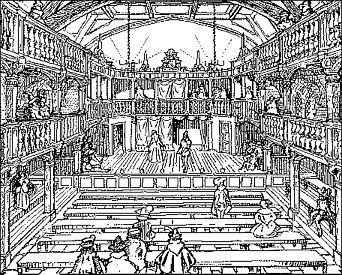The second Blackfriars theatre
In 1608 the second Blackfriars was leased by the King's Men through a syndicate consisting of the Burbage brothers, Shakespeare, John Heminge and Henry Condell (the two actors who produced the First Folio), William Sly and Thomas Evans.
Although, like the earlier Blackfriars theatre, it was technically within the city, the area was a "liberty," not under the jurisdiction of the puritanical city authorities.
Footnotes
-
Heigh-ho the wind and the rain
The Blackfriars offered all-weather performances and therefore drew a more elite clientele and was able to charge higher admission prices. The King's Men "gott. . .more in one Winter in the said great Hall by a thousand powndes than they were used to gett in the Banckside."
The indoor theatre, with its wealthier audience, allowed playwrights to narrow the appeal of their plays. One brilliant burlesque of the period, The Knight of the Burning Pestle, by Francis Beaumont, satirizes the taste of those who preferred the public theatres. Shakespeare seems to have been largely unaffected by the change, though The Tempest, with its many masque-like effects may have been written as an indoor play.
Prices
Admission at the second Blackfriars was more expensive than the public theatres: 6 pence for the galleries, 1 shilling for a bench in the pit, and half a crown for a box.
